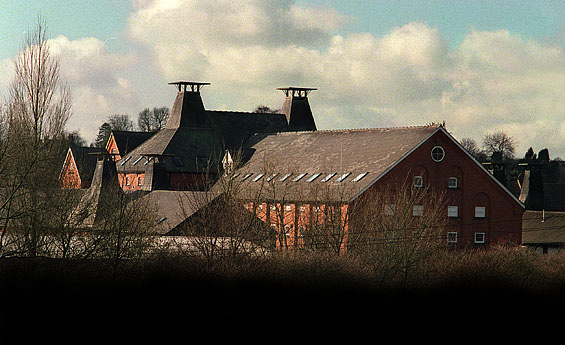|
Without certainty malting is said to have been discovered by the ancient Egyptians, whose skills were then transported to Greece and from there to Northern Europe. The process was certainly around in the first century AD and gained considerable popularity in the medieval period.
Malting is one of Britain’s oldest rural industries, which by Tudor and Stuart times was big business. Bishop’s Stortford’s reputation was founded on its popularity as a market town, but it was its malting industry that brought it wealth, fame and long-term employment. The town was perfectly situated for such an industry; Hertfordshire, Essex and East Anglia being established early on as the major source of malt because of its dry climate and light soils overlying chalk. This, along with the fact that the rapidly expanding metropolis of London, only 35 miles away, had an insatiable appetite for the roasted malt used to produce strong, dark porter ale, meant it couldn’t go far wrong.
Malting is a process that converts the starch in cereal grain – usually barley – to alternative forms of sugar used in brewing. The grain is first conditioned on a kiln and then left for a short while before being steeped in water. Transferred to malting floors and allowed to partially grow, it is controlled by constant turning and raking and occasional watering to keep it moist. Floor temperature is carefully regulated and at a certain point growth is stopped by increasing heat on the kiln to produce the roasted malt. It is this that imparts more colour and flavour to brewed beer. The conversion from barley to malt takes, on average, 14 days and though practically all grain can be malted, barley is the most suitable. It has and always will be the raw material used for brewing. The traditional method of production i.e. floor malting, was used until about 1880 and though new techniques were found, the principle has always remained the same.
As the industry became firmly established here in the 16th century, dozens of maltings were built in and around the town centre. Many were small business concerns built of timber and operated by just one or two people, but wealthier maltsers built their malthouses of brick and on a far grander scale. The finest examples of these are in South Street, built and once owned by HA & D Taylors (See Guide 13).
The conical chimneys of these distinctive buildings emitted a rich aroma of roasted malt – a smell not unlike that of roasting coffee – that permeated the air for miles around. It is said the smell was still a feature of Bishop’s Stortford up until the 1960s – in the 1800s it must have been stifling!
Malt was initially transported to London by large carts known as drugges, drawn by teams of up to eight horses. It was the huge scale of the industry in the 18th century that eventually led to the building of the Stort Navigation, and prior to 1800 Bishop’s Stortford supplied more malt to the London brewers of porter than any other town in England. With the arrival of the railway in 1842, transportation became quicker and easier but by this time Bishop’s Stortford’s output had been surpassed by the neighbouring town of Ware.
By the turn of the 20th century the whole of Hertfordshire’s malting industry had declined markedly after the London breweries began to acquire their own maltings in Norfolk. A few of the smaller concerns carried on as local breweries as did the largest local company, HA & D Taylors, whose nearby Sawbridgeworth malting remained in operation until 1980.
Below are just a few of the names recorded as maltsters or brewers in the town during the 18th and 19th centuries.
Bailey Brothers ran the Fox Brewery at Dunmow Road between 1902 and 1915.
Barley’s Brewery also produced mineral waters and other beverages. Location and dates unknown.
Flinn and Sons were maltsters at Bridge Street in the 18th century and early 19th century.
James Hanchett was a brewer and beerhouse keeper in South Street.
Hawkes Brewery was established at Water Lane in 1780. Became Hawkes Nash & Co 1845–1850 and Hawkes and Partners in 1851. At some time after this date Hawkes sold the brewery to the Wiggin family, and it was named Hawkes and Co when sold to Benskins Brewery in 1915.
Joseph Robert Heath was at the Fox Brewery, Dunmow Road 1886-1890.
Frederick Nash, brewer in South Street, formed partnership with Hawkes brewery in 1845.
William Newman was a brewer in South Street 1831–1854.
Thomas Phipp, brewer and beer retailor in South Street 1846–1854.
W.R.Stanton bought the Fox Brewery at Dunmow Road in 1902.
John Taylor was a malt-factor of Bishop’s Stortford. At his death in 1827 his business went to his sons, Joseph and William. Their prime outlet was Trumans Brewery.
John Tucker nurseryman and brewer at the Cherry Tree, South Street 1831 and 1846.
Edmund Wyman brewer at Rye Street in 1851.
|
|



